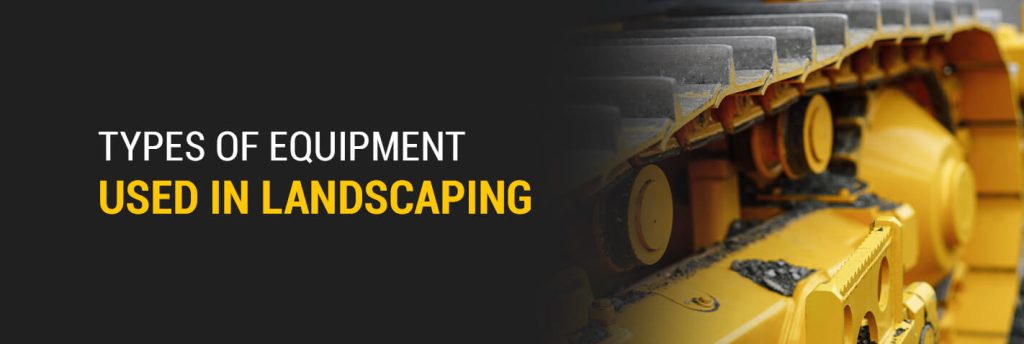
Heavy equipment is commonly used in landscaping to complete different tasks, including excavating the ground, moving soil to other locations and grading the terrain. Your equipment should withstand frequent use and different conditions, as your work will likely vary from one job to the next. Learn more below about the different types of heavy equipment for landscaping and how to select the best equipment for your work.
The equipment you need for your landscaping business will depend on the needs of your jobs. You have plenty of options when it comes to the different types of landscaping equipment, and some of the most common options include:
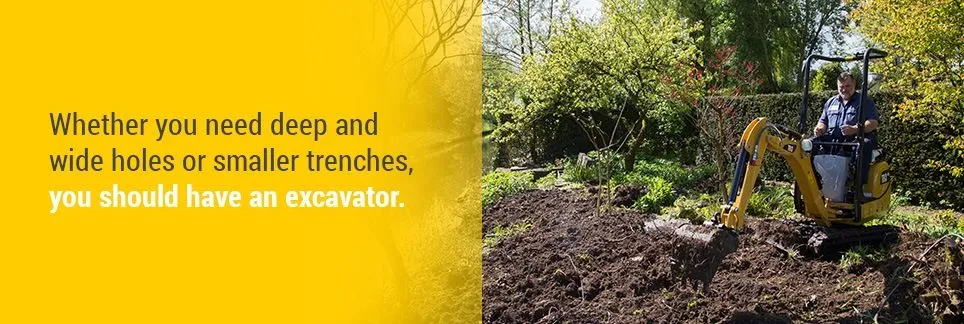
Excavators are an excellent tool for landscaping jobs, whether you need small trenches or deep holes. Excavators are available in wheeled or tracked models, offering more maneuverability and flexibility while working on rugged terrain.
Wheeled excavators allow you to maneuver faster, while tracked excavators can operate on challenging terrain. The excavator operator will have a full view of the worksite from the cab, making it easy to complete tasks with minimal manual labor.
You can also find mini excavators to complete small tasks for simple renovations. Some excavators come with attachments, such as suction tools that can help you vacuum soil at the worksite. A qualified heavy equipment dealer can help you find the best excavator and attachments for your business.
Backhoe loaders are versatile machines that allow you to change tasks in minutes and get more work done in a shorter amount of time. Backhoe loaders can complete different tasks, such as digging, backfilling and moving soil.
One side of a backhoe loader features a bucket that allows you to backfill or dig, while the other side has a loader that makes it easy to move soil from holes at the worksite. Some backhoe loaders also feature different technology to make your landscaping tasks easier, such as simplified joystick controls and load-sensing hydraulics for improved control and efficiency.
Skid steer loaders are smaller than other types of heavy equipment but are one of the most flexible pieces of equipment within the landscaping industry. These machines are easy to maneuver and have various attachments that can be applied for improved efficiency and performance.
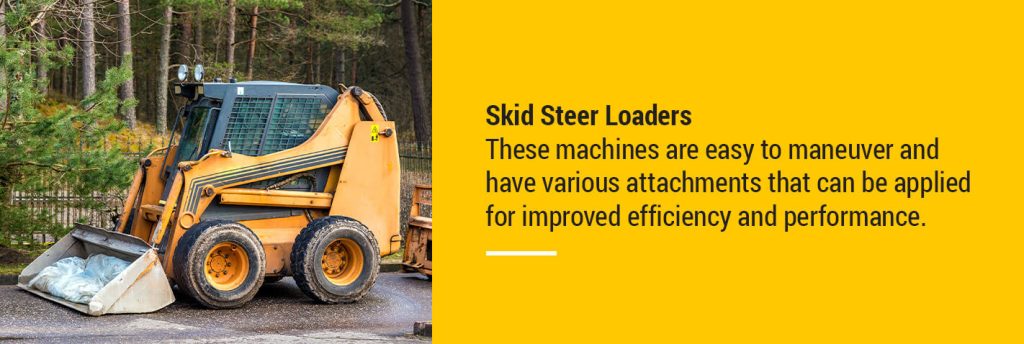
These pieces of equipment feature a smaller turning radius, which helps reduce soil compaction while improving traction. These machines work best at job sites with small, compact spaces, allowing you to complete even the most challenging landscaping jobs.
Further, some skid steer loaders have unique features that set them apart from standard machines. For example, you can find skid steer loaders with rear-facing cameras for improved safety and guards to protect equipment and the operator when entering the equipment.
Compact track loaders are a great choice when working on delicate, soft, wet or uneven terrain. While these pieces of equipment are small, they’re incredibly powerful and can clear brush, smooth soil, and remove rubble.
Compact track loaders can travel faster than other types of equipment, which can help you complete tasks quicker and more efficiently. Compact track loaders also allow you to complete tasks in the rain since they can maneuver over wet or muddy ground, allowing you to stay on your project schedule without tearing up the ground.
You can find compact track loaders with different features and attachments to help multiply the capabilities of your loader and keep your projects on schedule. Some examples of attachments you can use on compact track loaders to boost efficiency include trenchers, buckets, spreaders, angle booms and augers.
Compact or garden tractors are ideal for fixing landscapes. This equipment can help cut weeds and aerate the soil to prepare it for planting. You can also use compact tractors to clear snow or leaves and tow lightweight landscaping materials. Due to the small size and versatility of compact tractors, they make a perfect addition to your equipment fleet for landscaping jobs and renovations.
Wheel loaders come in different sizes, from compact to large commercial sizes. The different sizes allow you to work on various jobs, including smaller landscaping renovations or large excavations. However, wheel loaders take up more space than other types of equipment, so they need enough space to turn around at the job site. Wheel loaders are ideal for moving and transferring materials from one location to another.
Some wheel loaders have different features to boost productivity and efficiency, such as a creeper control that helps adjust speed. You can also find attachments to complete multiple tasks. Most compact and standard wheel loaders come with the same features, regardless of size, making it easy to find the right equipment for your applications.
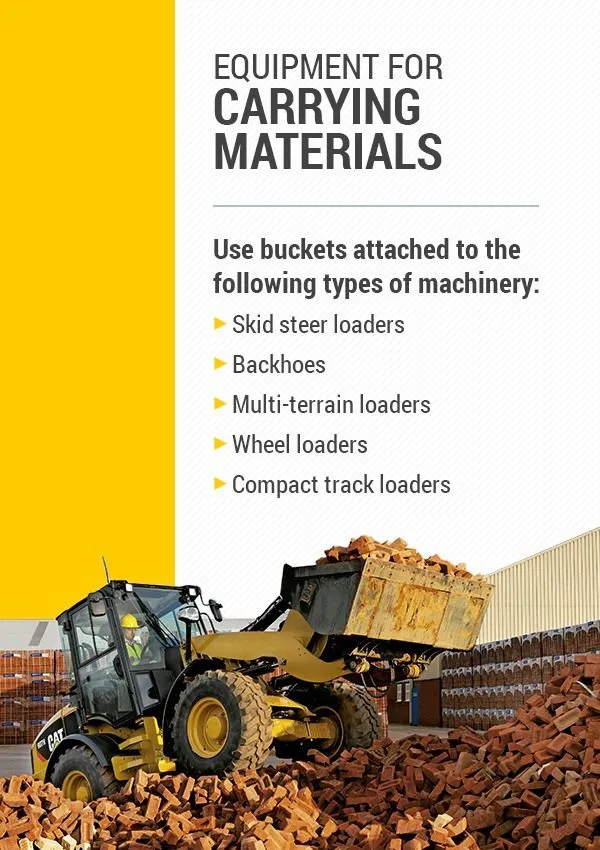
Tools and machinery for landscaping often have highly specific applications, so you’ll want to choose the right equipment for tasks like diffing, hauling or loading. Some machinery has multiple purposes, allowing you to use one piece of equipment for multiple applications.
Some of the common applications in landscaping include:
Digging is one of the most common landscaping tasks, and it necessitates the right equipment. The equipment you use will depend on how much you need to dig, the size of the hole or trench and the ground conditions.
For example, if you have a larger landscaping job that requires hefty amounts of digging, an excavator can help you get the job done. However, smaller digging jobs would be suited to skid steer loaders and other smaller equipment. Other machinery you can find for digging applications include:
Once you’ve dug a hole or a trench, you need equipment to move this dirt and debris. Loaders are commonly used to clear land, which makes them great tools for loading dirt and other debris that’s dug up on landscaping sites. Some equipment you can consider for loading tasks include:
Once your debris is loaded, you’ll need to haul it to a different location. You may also need to haul materials to the job site, depending on the specifics of your project. You can find attachments for different equipment or choose equipment that comes pre-equipped with hauling attachments. Some options you can choose include:
Some landscaping projects may call for grading the land to achieve the best appearance or to make the ground level for other landscaping tasks. Some equipment you can choose for grading tasks include:
To select the right landscaping equipment, understanding the tasks you need to complete for your projects will help narrow down your choices. Consider versatility, as some machines can perform multiple functions with the right attachments. For example, backhoe loaders are excellent choices for landscaping projects because they can be used for digging, loading, hauling, and grading tasks. This approach maximizes efficiency and ensures you choose equipment suitable for various landscaping needs. A qualified equipment dealer can talk you through the benefits of each type of equipment and help you decide what would be best for your business.
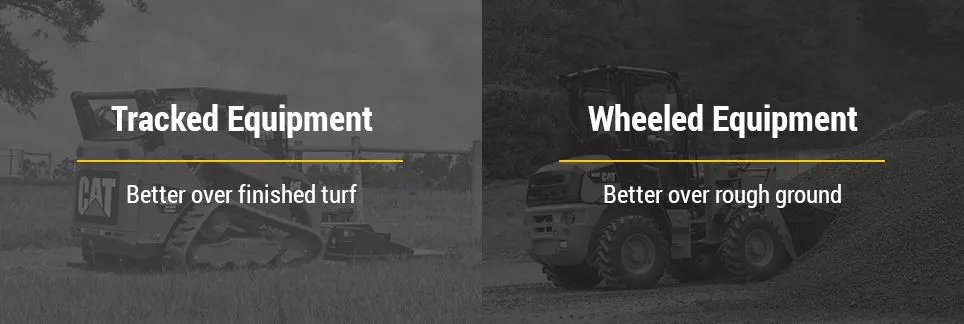
Consider various factors to determine which types of landscaping equipment are best for your business:
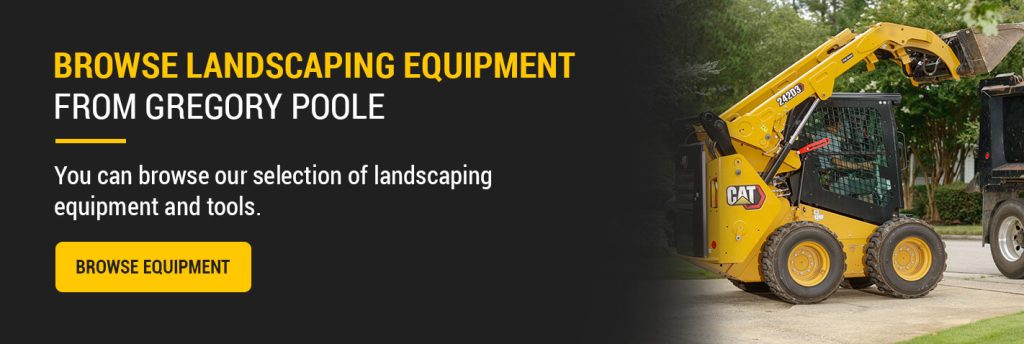
Gregory Poole has provided heavy equipment to different industries in eastern North Carolina for over 70 years. We offer a wide range of Cat® equipment, from excavators and backhoes to skid steer and wheel loaders. We offer continuous support so you can rest easy knowing that your equipment will continue to perform to help your business thrive.
You can browse our selection of landscaping equipment and tools or contact us today to learn more.